How well is your business doing? Let’s look at the numbers.
First, calculate the primary financial metrics in your business by following our definitions here. Then compare your result against Two-Brain gyms around the world below.
What’s most important is that you see improvement, not that you “beat” anyone. Entrepreneurship is a long game. These aren’t the only measures of success. But I don’t have to tell you the value of a leaderboard, right?
Profit
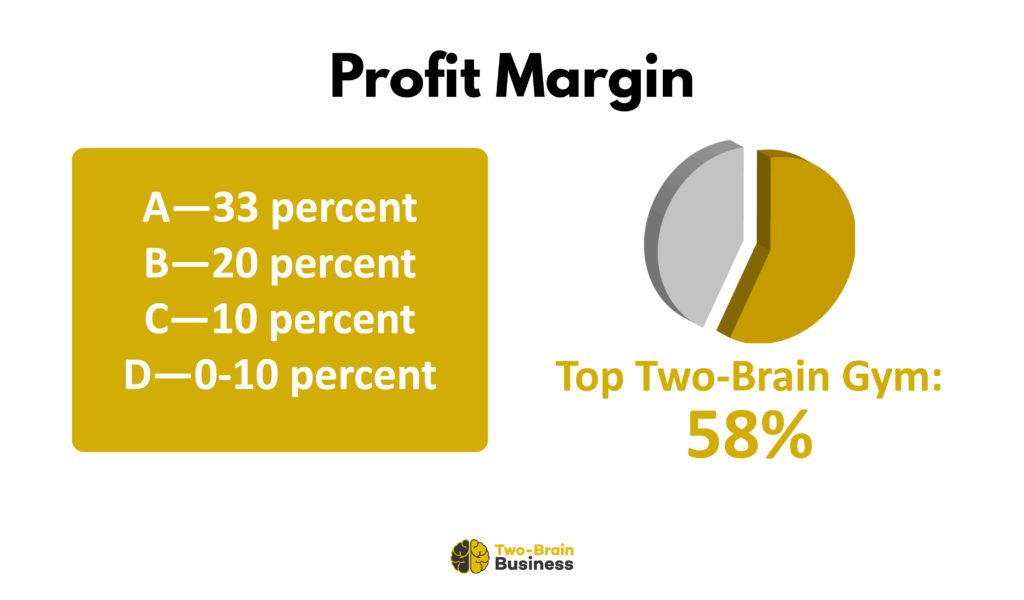
Let’s start with the most important metric for your business: Profit.
How does your score stand up?
A—33 percent profit margin (the top gym in Two-Brain was at a 58 percent profit margin last month).
B—20 percent profit margin.
C —10 percent profit margin.
D—0-10 percent profit margin.
The Two-Brain average in 2020 was 15 percent. The rest of the industry averaged below 0 percent. (Download our “State of the Industry Guide” here.)
Net Owner Benefit
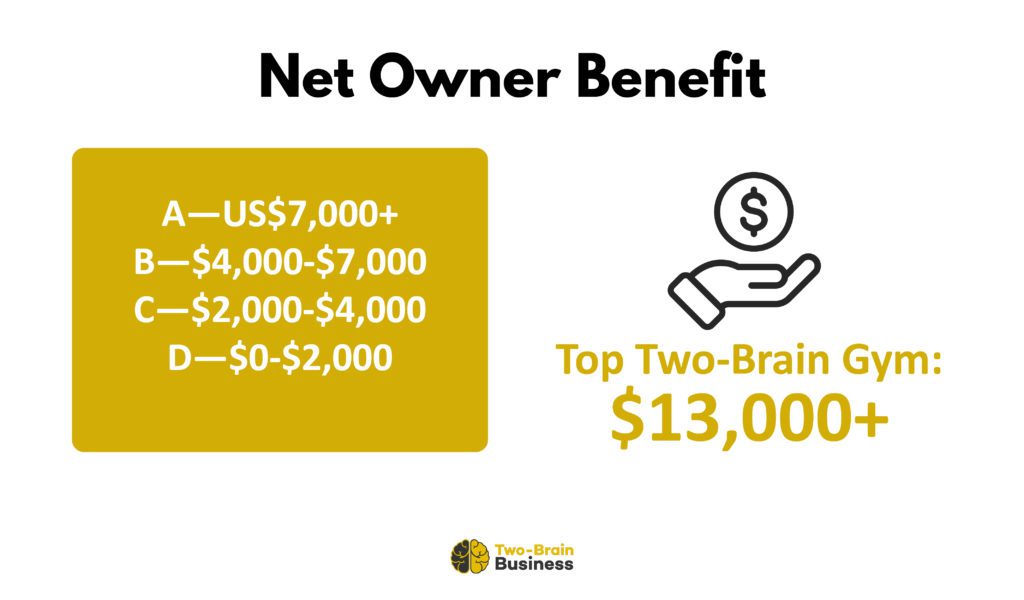
The most important metric for the owner? Net owner benefit.
Add up your pay and your profit distributions first. Then think about the other big expenses you would have to cover if you sold or closed your business. Then add the little “extras”: those times your gym pays for your coffee or buys you lunch. Add them all up. That’s your net owner benefit or the total reward you get from your business. Divide that number by 12 to determine your monthly net owner benefit.
Read more here: “By the Numbers: What Gym Owners Earn.”
How does your score stand up each month?
A—US$7,000+ (the top gym in Two-Brain was over $13,000 in net owner benefit last month).
B—$4,000-$7,000.
C—$2,000-$4,000.
D—$0-$2,000.
Functional Retirement
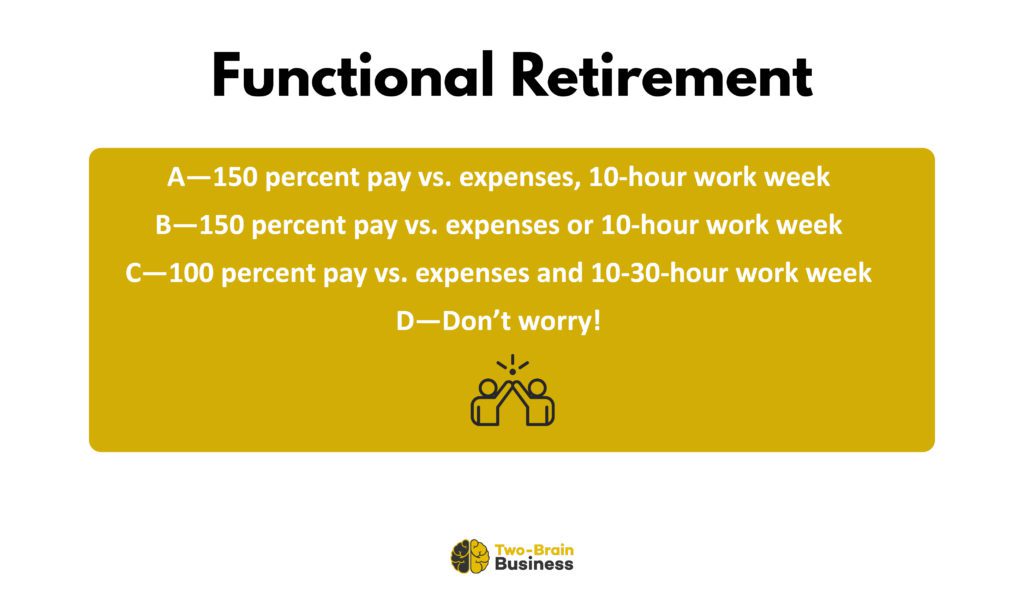
The most important metric for measuring your progress? Functional retirement.
Functional retirement is a huge milestone for an entrepreneur. It’s the point at which you have the freedom of finances and time.
In the Two-Brain Growth program, we say that functional retirement is achieved when an owner is paid 150 percent of personal monthly expenses and is required to work less than 10 hours per week.
Add up your monthly personal expenses. Then compare that number to what your gym pays you (your net owner benefit, described above).
Next, add up all the time you spend working in your business. Include the time spent scrolling through Facebook groups for gym owners, programming, answering texts from clients—all of it. How does that compare?
How does your score stand up?
A—150 percent pay compared to expenses, 10 hours per week of work.
B—150 percent pay compared to expenses or 10 hours per week of work.
C—100 percent pay compared to expenses and 10-30 hours per week of work.
D—Don’t worry about a rating of D. Most people reading this aren’t close to functional retirement yet. But as time passes, this report becomes more and more important.
Cash Flow
Now let’s dig a bit deeper.
The most important metrics for your cash flow? Average revenue per member per month (ARM), length of engagement (LEG) and lifetime value of a client (LTV).
ARM
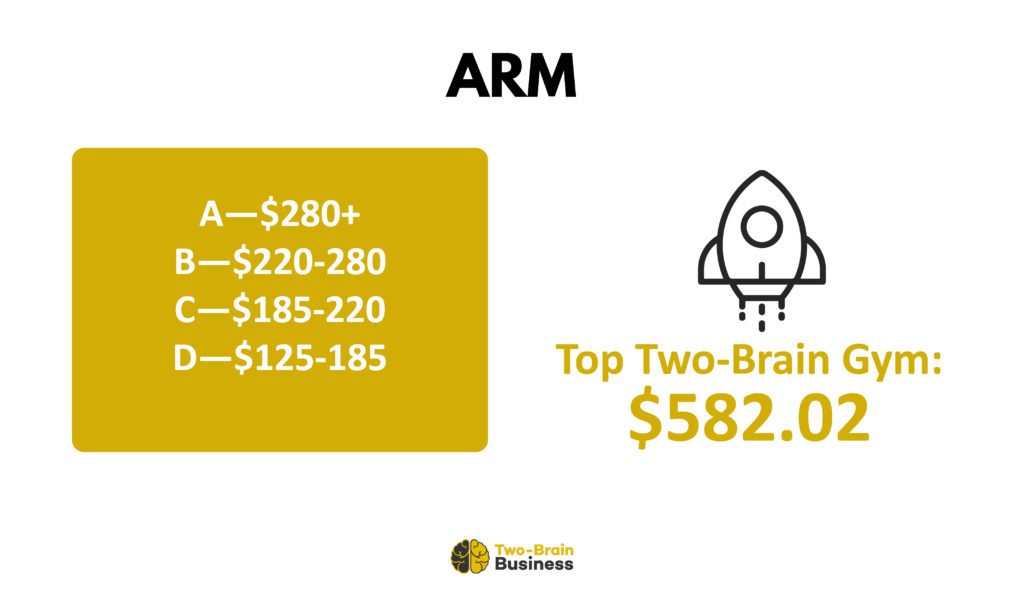
ARM: Calculate it by dividing your total revenue by all members at your gym, including your coaches or “freebies.”
How does your score stand up?
A—$280+ (the top gym in Two-Brain was $582.02 last month).
B—$220-280.
C—$185-220.
D—$125-185.
LEG
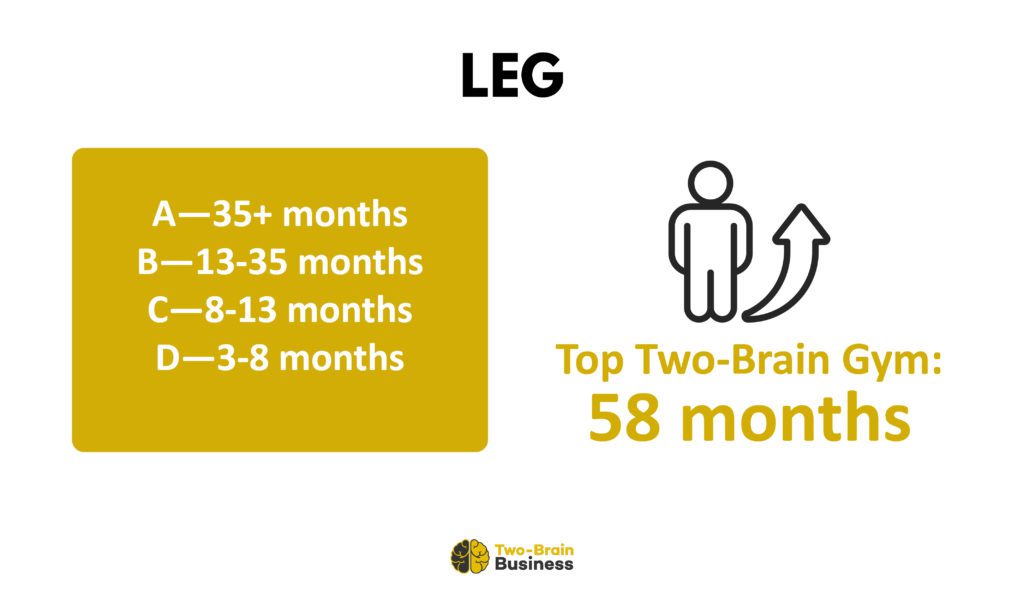
LEG: the average length of time a client stays with your business (in months).
How does your score stand up?
A—35+ months (the top gym in Two-Brain is currently at 58 months).
B—13-35 months.
C—8-13 months.
D—3-8 months.
LTV
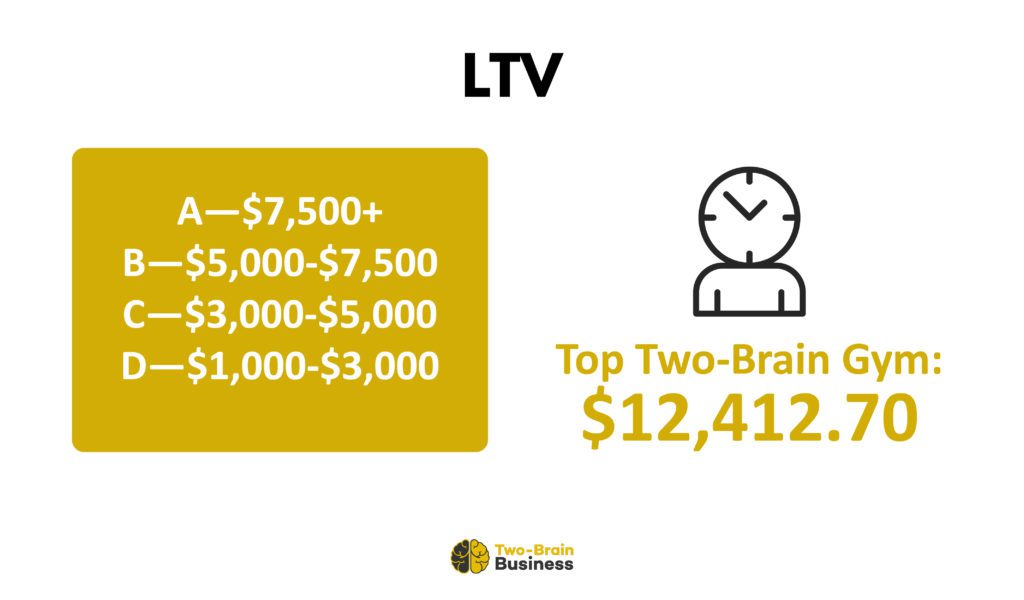
LTV: the lifetime value of a client. Calculate it by multiplying your ARM x LEG.
How does your score stand up?
A—$7,500+ (the top gym in Two-Brain had an LTV of $12,412.70 last month).
B—$5,000-$7,500.
C—$3,000-$5,000.
D—$1,000-$3,000.
Effective Hourly Rate
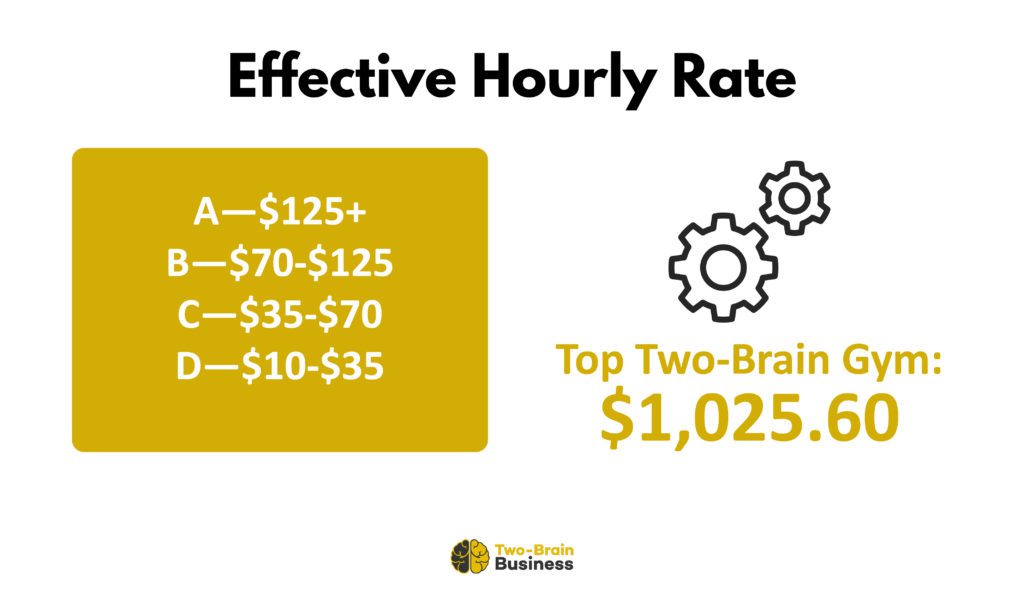
Finally, the “Kingmaker” or “Queenmaker” metric: the value of your time as an entrepreneur.
Effective Hourly Rate (EHR): Add up all the hours you work in the business and all the hours you work on the business. If you’re at the gym, count those hours, even if you’re working out. If you’re doing programming at home, count those hours. If your laptop is open or if you’re combing through Facebook groups for gym owners, count those hours. Add them all.
Then divide that number into your net owner benefit to calculate your EHR. Net owner benefit divided by owner hours equals EHR.
How does your score stand up?
A—$125+ (the top gym in Two-Brain had an EHR of $1,025.60 last month).
B—$70-$125 (basically, you’re earning more as a gym owner than you would as a personal trainer).
C—$35-$70 (you’re earning as much as or more than your staff).
D—$10-$35 (you’re earning as much as or more than you would at another job).
Take Action in 2021
What’s most important? It’s not how you compare against “the average.” It’s how you compare against yourself a year ago.
2020 was the biggest test that any gym owner has ever seen. Survival is a huge win. If you scored mostly C’s and D’s on this test, don’t worry: Just use those ratings as a baseline for next year and use the level above your current state as your target!

